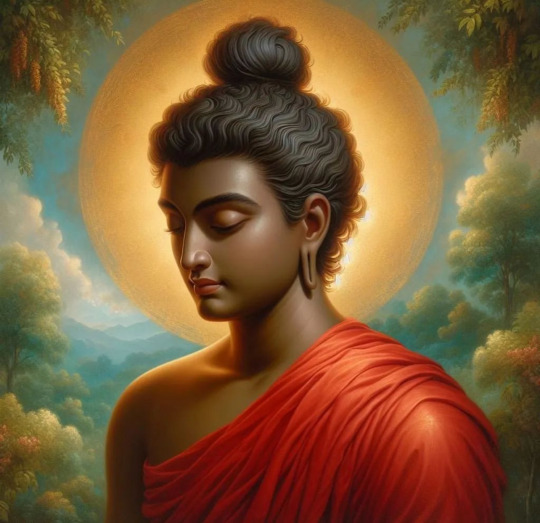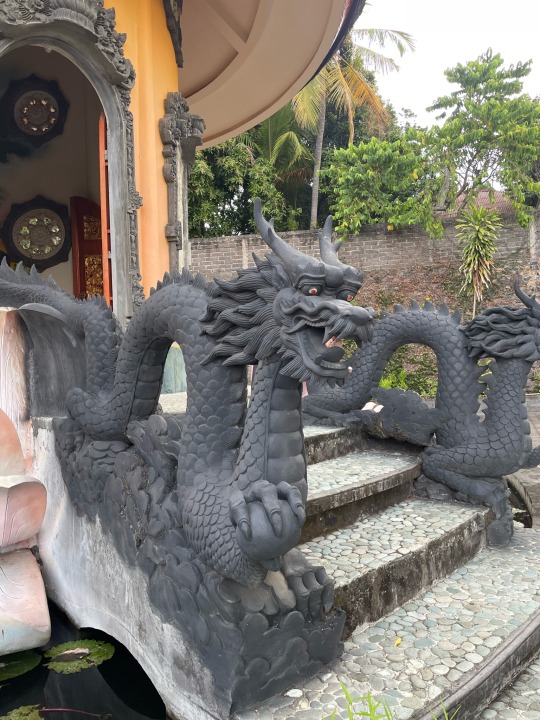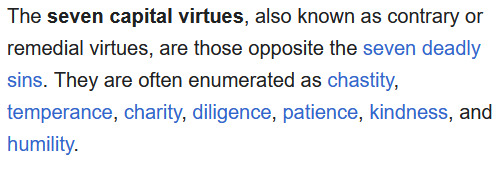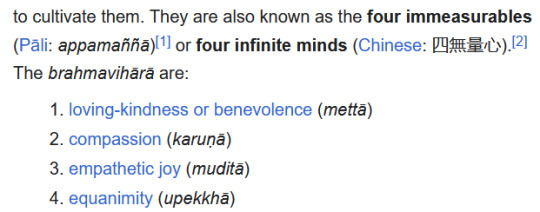#brahmavihara
Explore tagged Tumblr posts
Text
Becoming Arnold Schwarzenegger
Arnold Schwarzenegger claims that his success was his ability to have a clear vision of what he wanted to achieve. He recounts his inspiration for becoming a body builder and a movie star seeing a picture of body builder Reg Park in Hercules. In a world of linear cause and effect it could be said that the picture caused Arnold to firstly win body builder competitions which allowed him to move into the movie industry and to become the phenomenon he became.
However, there are good reasons to consider our Universe which is not one of linear cause and effect but one on non-linearity - circular causality. Consider the Universe to be ineffable whole of interconnections. Within such a system emergent patterns appear called strange attractors. Think of the flock as the strange attractor of interacting starlings.
So what is Arnold Schwarzenegger in an interconnected Universe? Well let’s consider him as a pattern in the interconnected system labelled The Arnold Strange Attractor. Similarly then that the picture of Reg Park is the Picture Strange Attractor. The interaction of the Arnold Strange Attractor and the Picture Strange Attractor creates an imagining pattern which is once again is a strange attractor labelled here as The Success Strange Attractor.
An imagining seems very ethereal pattern compared to a very material thing like the Arnold pattern. However they are still both Strange Attractors, it is just one is more ‘tangible’ than the other.
Now instead of seeing Arnold striving towards his goal, the non-linear view is an attraction towards a convergence of The Arnold Strange Attractor and The Success Strange Attractor where the relationship making the Success Strange Attractor more tangible.
Arnold wins competitions and the image of The Success Strange Attractor is broadcast to spectators. A TV documentary is made about him and the Success Strange gains more tangibility through the replication process, not only through the show, marketing and word of mouth. The Success Strange Attractor paired with The Arnold Self Attractor is in a constant state of reinforcement until a very tangible Successful Arnold Strange Attractor is emergent.
Bizarrely, due to the nature of interconnected systems the Success Arnold Strange Attractor is simultaneously Arnold the movie star, Reg Park who was photographed and the future of politics. Arnold is just an atemporal pattern in a much larger pattern.
So, we are not always in charge of what we think and imagine, but sometimes we feel we have the capacity to will them. We may think that those wilful, intangible thoughts and imaginings are private and locked away from the Universe, but each one could actually be shaping our tangible Universe. If this is true should we question the very ethics of what we think, envision or sing about? What we put on social media?
Either way It is good to feel we were as much part of Arnold’s success as he was to his own, something that has brought joy to many, many people - good on us.
#Arnold Schwarzenegger#reg park#systems thinking#systems philosophy#philosophy#philosophy of mind#personal philosophy#conciosness#conscious experience#free will#determinism#brahmaviharas
6 notes
·
View notes
Text

Monday metta 🙏🏻
Metta bhavana is part of a series of four practices, called the brahmaviharas (literally “abiding in the best or highest mental states”). This term comprises:
Kindness, or metta (valuing and supporting others’ sense of well-being)
Compassion or karuna (the desire to help others who are suffering)
Appreciative joy, or mudita (appreciating the positive qualities others have that bring them peace and happiness)
Equanimity, or upekkha (patient acceptance of both our own and others’ joy and suffering)
86 notes
·
View notes
Text
The Concepts of Community & Family as it Relates to Thai Buddhism in Peaceful Property
I really really enjoyed watching this series. I am someone who grew disillusioned with Buddhism at a young age for very personal reasons, only to find my own version of a relationship with it as I grew older and learned to appreciate it from a different perspective. So the spiritual meaning behind this series really resonated with me.
I can only explain things to the best of my personal knowledge, so my apologies if anything is factually incorrect.
There are four basic tenets that one must cultivate in order to achieve true happiness. They are known as the brahmavihara (พรหมวิหาร). 1 - Metta (เมตตา): Literally translating to mean 'goodwill', it is a genuine concern for the well-being of others. 2 - Karuna (กรุณา): Literally translating to mean 'compassion', it is the recognition of another's suffering as one's own and a selfless desire for that suffering to end. 3 - Mutita (มุทิตา): Literally translating to mean 'kindliness', it is the feeling of experiencing sincere gratification from the happiness and success of others, regardless of self-contribution. 4 - Ubeka (อุเบกขา): Literally translating to mean 'equanimity', it is the ability to remain impartial combined with the understanding the we cannot mitigate the personal karma of others.
Essentially, the brahmavihara teaches us to always place others above ourselves... while realizing that they will be responsible for facing their own consequences if they fail to do the same.
How does this play into the "family" dynamics that exist in PP? Oddly enough there are certain facets of Buddhism that preach 'anti-family' values, as family can be one's primary source of attachment and suffering. There is a quote that states, "Family is the blood that burdens you." However, when a familial bloodline has lost its way (or in this case, has been "cursed"), Buddhism encourages surrounding yourself with a community that is organized on a familial basis... what we would call 'sangha' or 'found family'. Valuing the members of that found family above corrupt ideology would realign one's path toward enlightenment. Or in simpler terms, the people we choose to surround ourselves with can spiritually save us from ourselves.
Home's family has been "cursed" by the three poisons of Buddhism: greed, hatred, and ignorance. Phon's greed and value of worldly possessions over others has led her down of path of literal darkness, toward a belief in the occult. Somkid's hatred toward his father has fueled his deceptive behaviors... which he saw as a way to reclaim a father's love (that he believed he never received) from the people who didn't deserve it. Home's grandfather was ignorant as to how his actions, or lack thereof, affected the family and community that surrounded him.
Home's own version of ignorance would have led to his own karmic downfall. The series does a great job of having Home slowly discover the true meaning of home by integrating him within a 'found family' that teaches him the values of the brahmavihara... which ultimately leads to his spiritual 'awakening' (in a sense).
Metta/Karuna: Communicating with and healing the souls of the spirits the group encounter, requires compassion and understanding... a sense of community/sangha that these spirits and Chobkol (the magician) were lacking.
There were several instances of compassion born out of goodwill, the most obvious being between Home and Peach. Forgiveness is a big deal in Thai Buddhism. It is one of the cornerstones of what we refer to as "harmonious justice", as it promotes ideals of true selflessness. Peach forgiving Home because he's seen the changes in Home and how this one action does not define who Home actively wants to become was really really important. Home and Peach exist in balance of one another... keeping them on a shared karmic path where Home can no longer 'turn a blind eye' to his family's injustices (we could get into that more, but that'll make this even longer than it already is 😜😜😜). I think having Tay and New take on these roles to almost ease the minds of non-Buddhist viewers toward a more Buddhist ideology was actually quietly genius.
Sangha is also what heals the vengeance in Kan's heart, born of the teachings of Metta: "We must refrain from inflicting suffering upon one another and be free from vengeance." It could have been woven into the narrative with a bit more finesse... but I digress.
Ubeka: Home accepts the rightfully directed anger and complaints against him and his family for the harm they have caused. His partiality toward his family, simply because he is related to them, disappears. He stands against his aunt and fights against his uncle at the risk of his own life. And he does so by still allowing them to face the karmic consequences of their own terrible crimes... whether they are at peace with it or not.
Mutita: Home celebrates Peach's dreams above his own wishes... without knowing that they would eventually coincide. I could even argue that their eventual correlation could be a result of Home's 'good karma' paying forward.
Home had to reevaluate his core morals in order to be free of his family's curse (meaning within himself). All these representations of Buddhist notions, born from within his newfound family, are what define Home's idea of the true meaning of home... and happiness.
#peaceful property#peaceful property on sale#i got exactly what i thought i would get out of this series#and i'm very okay with that#talk thai to me
128 notes
·
View notes
Text

The Brahmavihara
Also called the four immeasurables, the brahmavihara comprise a quartet of virtues that illuminate the path to a more compassionate and harmonious existence, paired with meditation methods crafted for their enrichment.
1. Metta (Loving-Kindness):
In a world often overshadowed by discord, Metta encourages us to radiate boundless love and goodwill towards all beings. Imagine a heart overflowing with warmth, extending compassion indiscriminately. As we cultivate loving-kindness within, we become beacons of positivity, fostering connections that transcend boundaries.
2. Karuna (Compassion):
Karuna beckons us to embrace the suffering of others with an open heart. It's a call to action, inspiring us to alleviate pain and contribute to the well-being of those around us.
Compassion isn't passive; it's the catalyst for positive change. In extending a helping hand, we find purpose and forge bonds that bind us in our shared humanity.
3. Mudita (Empathetic Joy):
Mudita invites us to celebrate the joy of others sincerely.
When we eradicate jealousy and self-centeredness, we create space for shared happiness. Rejoicing in the success and good fortune of others fosters a sense of interconnectedness, turning our hearts into reservoirs of joy that overflow into the lives of those we encounter.
4.. Upekkha (Equanimity):
Upekkha encourages a balanced and serene mind amidst life's fluctuations. It's about maintaining equanimity in the face of joy and sorrow, success and failure. By cultivating inner stability, we navigate the unpredictable currents of life with grace, fostering resilience and wisdom.
May Metta be the guiding force in our interactions, Karuna the catalyst for positive change, Mudita the source of shared joy, and Upekkha the anchor in life's ebb and flow.
13 notes
·
View notes
Text








Brahmavihara Arama 2024
3 notes
·
View notes
Text
Discover the Magic: A Perfect Bali Travel Experience
Introduction: Why Bali Should Be on Your 2025 Bucket List
Bali, the famed “Island of the Gods,” is a tropical paradise rich in natural beauty, vibrant culture, and warm hospitality. With its diverse landscape—from volcanic mountains and lush rice terraces to golden beaches and coral reefs—Bali has become a top-tier destination for travelers from all over the world. If you’re looking for the Bali travel guide 2025, this article has you covered with fresh insights, top places, and tips to make your adventure unforgettable.
Ubud: The Cultural and Spiritual Heart of Bali
Nestled in the uplands, Ubud is a must-visit for those seeking art, wellness, and tranquility. Known for its serene temples, yoga retreats, and the iconic Monkey Forest, Ubud is a center of Balinese culture. Visit the traditional market, take a cooking class, or enjoy a sunrise hike up Mount Batur for panoramic views.
Ubud is also home to the famous Tegallalang Rice Terraces, a UNESCO-recognized marvel. Their photogenic beauty makes them one of the best places to visit in Bali, especially for nature lovers and photographers.

Seminyak and Kuta: Beaches, Sunsets, and Vibrant Nightlife
When it comes to coastal charm, Seminyak and Kuta steal the show. These bustling towns offer golden beaches, high-end resorts, and world-class dining. Seminyak, in particular, is perfect for shopping at trendy boutiques and lounging at beach clubs like Potato Head and Ku De Ta.
Kuta, on the other hand, is ideal for budget travelers and surfers. Its energetic vibe, combined with affordable accommodations and bustling markets, makes it a hotspot on any Bali travel guide 2025.
Nusa Penida: Raw Beauty Just a Ferry Ride Away
A short trip from Bali’s mainland, Nusa Penida is a haven for adventurers and photographers. Its dramatic cliffs, turquoise waters, and unique rock formations like Kelingking Beach and Broken Beach leave an unforgettable impression.
Snorkeling at Crystal Bay or Manta Point offers a glimpse into the island’s thriving marine life, making it one of the best places to visit in Bali for underwater enthusiasts.
Uluwatu: Clifftop Temples and Surfing Dreams
Perched on limestone cliffs in the southern tip of Bali, Uluwatu combines sacred traditions with beach vibes. The Uluwatu Temple, with its nightly Kecak dance performances and stunning sunset views, delivers both culture and awe.
Uluwatu’s beaches like Padang Padang and Bingin are known for their world-class waves, drawing surfers from across the globe. It’s a prime addition to your Bali travel guide 2025, especially if you enjoy a blend of spirituality and sea.
Lovina and North Bali: Hidden Gems and Dolphin Cruises
Far from the tourist-heavy south, North Bali offers tranquility and authenticity. Lovina Beach is famous for its dolphin-watching tours at dawn, black sand beaches, and peaceful atmosphere.
Explore the nearby Banjar Hot Springs, waterfalls like Gitgit, and the serene Buddhist monastery, Brahmavihara-Arama. For those who prefer the road less traveled, this region offers some of the best places to visit in Bali without the crowds.
Sidemen and East Bali: A Glimpse into Traditional Life
Sidemen Valley remains one of Bali’s best-kept secrets. This lush and quiet area offers a window into the island’s traditional farming life and natural rhythms. Trek through rice paddies, visit local weavers, or simply relax in a scenic villa with Mount Agung in the backdrop.
East Bali is also home to the Gates of Heaven at Lempuyang Temple—a photo spot that has gone viral but remains deeply spiritual. Include this region in your Bali travel guide 2025 for a well-rounded and soul-enriching experience.
Travel Tips: Make the Most of Your Bali Visit
Best Time to Visit: April to October for sunny, dry weather.
Local Transport: Rent a scooter for flexibility, or hire a private driver for day trips.
Cultural Etiquette: Dress modestly at temples, remove shoes before entering homes or religious sites, and be respectful of ceremonies.
Conclusion: Plan Your Journey with the Right Tools
Bali continues to captivate hearts with its enchanting mix of natural wonders, cultural richness, and unforgettable adventures. Whether you're lounging on Seminyak Beach, hiking in Ubud, or diving off Nusa Penida, the island offers something for every type of traveler. For a smooth and well-informed journey, consult the detailed itineraries and expert advice at travelthworld.com—your gateway to Bali’s finest experiences.
For More Info:-
Facebook
Pinterest
Instagram
Youtube
0 notes
Text

Nine years ago today, the Golden Land lost one of its greatest meditation masters. Sayadaw U Pandita, a revered Burmese Buddhist monk, left an enduring legacy that profoundly shaped the mindfulness meditation movement both in Myanmar and the Western world. Born in Burma in 1921, U Pandita began his monastic education early, becoming a respected scholar of Pali texts and eventually finding his path in mindfulness practice under the guidance of the renowned Mahasi Sayadaw when he was just twenty-nine years old. U Pandita's teaching style was precise, intense, and energetic. He emphasized not only the rigorous practice of mindfulness meditation but also the cultivation of the brahmaviharas—loving-kindness, compassion, sympathetic joy, and equanimity. This comprehensive approach left a deep impact on many Western teachers, including Joseph Goldstein, Sharon Salzberg, and Jack Kornfield, who were shaped by his guidance during their intensive meditation retreats. Beyond his role in the meditation hall, U Pandita founded the Panditarama Shwe Taung Gon Center, establishing a hub for meditation training that welcomed thousands of practitioners from all walks of life. He also dedicated himself to training female Anagarika nuns, reinforcing the strength of Buddhist teachings among laypeople and monastics alike. U Pandita held an unyielding belief in preserving the Buddha's teachings with authenticity, ensuring that the Dhamma was passed down with minimal personal influence. His commitment to sila—moral conduct—as a foundation for meditation practice became a hallmark of his teaching. One of his notable students was Aung San Suu Kyi, whose bravery and steadfast principles were nurtured, in part, by her time with Sayadaw U Pandita. To share just one remarkable anecdote: When she spoke of Emperor Ashoka's story to a classroom of young novices, she faced direct challenges from Khin Nyunt, the notorious military spymaster, who was looking to find some fault in his ardent nemesis. Yet, Sayadaw U Pandita's deep knowledge of scriptures and his unwavering support were instrumental in shielding her from the attempted military backlash. http://dlvr.it/TKBYPv
0 notes
Text
Loving kindness meditation
Loving-Kindness Meditation: A Pathway to Compassion and Healing Loving-kindness meditation, or Metta in Buddhist parlance, is a deep practice that infuses unconditional love and compassion into the psyche of the practitioner, thereby affecting not only their inner landscape but their relationships with others as well1. This ancient technique offers a fruitful pathway to emotional healing and growth. Meaning of Metta: The Nature of Loving-Kindness Metta is more than just a simple technique of meditation-it is a radical approach to understanding human connection. Loving-kindness meditation, at its core, is about cultivating unconditional, selfless love that extends beyond the personal boundaries of one's self to embrace all beings1. Developed within the Buddhist tradition, particularly in Theravada teachings, this practice shifts our fundamental approach to experiencing emotions and relationships. Scientific Insights into Loving-Kindness Meditation Research has revealed remarkable benefits of this practice: Emotional Regulation: Relieves symptoms of anxiety and depression1 Stress Management: Reduces overall psychological distress1 Self-Compassion: Enhances emotional well-being and self-concept1 Physiological Effect: Can even decrease inflammation when practiced regularly2 Neurological Changes Intriguing neurological studies show that loving-kindness meditation results in real alterations in the brain. It stimulates: Insula: Increasing empathy and awareness of the present moment Temporal Parietal Junction: Increasing emotional sensitivity and compassion2 The Four Brahmaviharas: Divine Abodes of the Heart
Loving-Kindness (Metta) Metta is the practice of developing real love for oneself and others. It is about creating warmth, acceptance, and good will for the happiness and well-being of all beings1.
Compassion (Karuna) Compassion is more than sympathy. It involves deep empathetic understanding and a true desire to relieve suffering in others3 .
Sympathetic Joy (Mudita) This practice is to rejoice in the happiness, success, and positive experiences of others—counteracting jealousy and competitive feelings3 .
Equanimity (Upekkha) Equanimity is a balanced, non-reactive state of mind. It allows the practitioner to maintain inner peace despite external circumstances3. Practical Benefits of Consistent Practice Practitioners of loving-kindness meditation can experience transformative outcomes: Increased Resilience: Building inner strength to navigate life's challenges1 Improved Relationships: Enhancing empathy and positive interactions1 Reduced Marital Conflict: Creating space for unconditional acceptance1 Enhanced Social Connection: Even brief practices can increase feelings of connectedness2 Personal Transformation It is an act of radical love to meditate on loving-kindness," says Jon Kabat-Zinn, mindfulness pioneer1. Through intentional loving-kindness practice, one will: Minimize self-criticism Enhance emotional intelligence Develop a more compassionate worldview How to Practice Find a quiet, comfortable space Focus on generating positive wishes to your self Gradually expand that towards loved ones Extend your compassion towards neutral persons Finally stretch to challenging relationships Radiate loving-kindness to all beings Important Note: Consistency is key. Even short, daily practices can yield significant benefits2. Conclusion Loving-kindness meditation offers a profound path to personal healing and societal transformation. By cultivating unconditional love and compassion, practitioners can create meaningful changes in their inner landscape and external relationships. As research continues to validate its benefits, loving-kindness meditation stands as a powerful tool for emotional well-being, stress reduction, and personal growth.
1 note
·
View note
Text
How to bring happiness in life through four Brahmaviharas
Buddhism is a fascinating spiritual journey that covers everything from being kind to practicing mindfulness and gaining wisdom. There are different flavours of Buddhism, but they all stress the importance of being present and showing compassion. It invites us to dive deep into our minds and hearts, helping us understand ourselves better. And Brahmaviharas of Buddhism are essential qualities…
0 notes
Text
Brahmaviharas by Ajahn Sumedho
Brahmaviharas by Ajahn Sumedho. Buddhist film about 42 minutes. https://wp.me/pFy3u-89B
Brahmaviharas (The Four Immeasurables): Equanimity, Loving Kindness, Compassion, and Sympathetic Joy. Buddhist film on the Brahmaviharas, about 42 minutes. Click here to see more teachings on Brahmaviharas (The Four Immeasurables).
1 note
·
View note
Text
I am what I experience, so I am experience, so I contain what I experience. If I wish happiness into my experience I create an emphatic joy within myself and all that I contain?
3 notes
·
View notes
Text
Having 0 experiance in Religious Theory, I find it funny that the Christian Seven Heavnly Virtures are mostly like restrictions you have to put on your self and a Buddhism Equivilant, the Brahmavihara, is about just being nice and having a good time


#I wonder if there are other Deadly Sins/Heavnly Virtues to compare and contrast#also i know full well that these probably are actually non comparable and there's nuance
0 notes
Text

Monday metta 🙏🏻
Metta is a Buddhist concept that refers to universal love, benevolence, and kindness. It's also known as loving-kindness, and is practiced through meditation.
Maitrī (Sanskrit; Pali: mettā) means benevolence, loving-kindness, friendliness, amity, good will, and active interest in others. It is the first of the four sublime states (Brahmaviharas) and one of the ten pāramīs of the Theravāda school of Buddhism.
44 notes
·
View notes
Link
🌟 Discover the transformative power of Brahmavihara! Embrace the four divine states of loving-kindness, compassion, joy, and equanimity to elevate your life and the world around you. Learn how these ancient Buddhist principles can guide you toward inner peace and deeper connections. ✨ Feel inspired? Dive into the spiritual journey of Brahmavihara with our complete guide. 🔗 Tap into a fulfilling life today! #InnerPeace #SpiritualAwakening #Brahmavihara #Mindfulness #Compassion
0 notes
Text
Chapter Notes | kachigaaru; to be worthy
you can read the newest chapter here!
Let's start of with some translations!
oyakata-sama
a traditional way to say "Master". I refer to Kagaya in prose as "master", however the character directly address him as oyakata-sama. This choice was made to distinguish other characters that are called master - for example, someone may call Akihito "Master" due to him being master of estate and a hashira, whereas oyakata-sama is reserved for the leader of the corps. Oyakata is traditionally used as a title for a father figure or provider. It's also very commonly used nowadays for sumo coaches.
nembutsu
also known in Chinese as nianfo, nembutsu is essentially a repetitive meditation in Pure Land Buddhism, commonly of the name of Amida Butsu (also known as Amitabha).
南・無・阿・弥・陀・仏 | namu amida butsu
one of the most common nembutsu - it essentially translates to "Praise Amida Butsu" or "I am aware of Amida Butsu" or even "I bow to Amida Butsu"
kyoudai sakazuki
a practice in which two people will swear over cups of sake to be sword brothers. the two people are not related, but after the practice, regard each other the same as true born family members. kyoudai means sibling to indicate the relationship - there are versions of this ceremony for parent-child relationships too. nowadays this is very commonly associated as a yakuza tradition or initiation.
shimuryoushin
also known as the brahmavihara, it is the four immeasurable virtues practiced and cultivated in Buddhism; loving-kindness or benevolence (mettā), compassion (karuṇā), empathetic joy (muditā), equanimity (upekkhā)
tsume-eri
the style of high western collar often seen in gakuran style uniforms. its the style of the demon slayer uniform.
tattsuke-hakama
the type of hakama worn for the corps' uniform where the bottom hem is bound into the kyahan shin guards.
umanori
essentially is means "horse-riding". umanori-hakama are divided/split hakama with two pant legs designed for riding horses. undivided hakama are full skirts with no pant legs and are worn over kimono, which can't accomodate a "split" or "divide".
keikogi
a type of garb commonly used for juudo or other martial arts practitioners. also known as a dougi or keigi. if you've ever seen a juudo match, they are likely wearing a keikogi.
waraji
traditional straw-woven sandals. similar to zoori, but because they are completed straw, they are significantly more flexible.
furisode
a long, flowing style of sleeve seen on kimono. generally furisode sleeves are considered formal and are reserved for young unmarried women (but not always!)
Next, a quick summary of the currently serving Hashira as of the beginning of Summer 1908.
Yanagizawa Yoriha
Dragon Hashira, 38 years old. She is the eldest serving hashira and de facto "leader" due to being in a position of seniority over the others. Has tanned skin marred with battle scars and shaved blond hair bar her side-swept bangs which cover her left eye and facial scarring. Has a very tall, muscular build.
Rengoku Shinjurou
Flame Hashira, 36 years old. Akihito's sworn brother. The Master of the Chrysanthemum Estate and Head of the Rengoku Family. He has lost himself to alcoholism since the death of his beloved wife, Ruka, one year ago. Unruly blonde hair with ends dipped in red, and vibrant red-and-gold eyes.
Urokodaki Ritsunoko
Water Hashira, 35 years old. She is Urokodaki Sakonji's only child and lives with Sen Watanobu at the Forest Estate. Long blue-black hair kept in a high tail, and bright sky blue eyes. She always wears a white kitsune mask with blue and red paint. She is Giyuu's master.
Sen Watanobu
Ice Hashira, 29 years old. He was once the tsuguko of Urokodaki Shouhaku, who was Sakonji's elder brother. After Shouhaku's death, he was too young to inherit his title, so continued training under Ritsunoko until promotion. Lives with her at the Forest Estate. Wavy navy hair kept in a low tail, and sad blue eyes.
Kakutani Akihito
Wind Hashira, 35 years old. Shinjurou's sworn brother. Master of the Spring Estate and Head of the Kakutani Family. Long, straight black hair with green eyes, the picture of nobility. Although he is older than Watanobu, he was promoted after the boy, making Watanobu his senior in rank - despite this he commonly sits with Yoriha and Shinjurou out of respect for his seniority in age and circumstance.
Himejima Gyoumei
Stone Hashira, 20 years old. A former monk turned demon slayer. He lives with Yanagizawa Yoriha at the Steel Estate. You should know this guy :')
Kakutani Yoake
Crane Hashira, 15 years old. Heir to the Spring Estate and daughter of the last Wind Hashira, Kakutani Atsuhito. Very long black hair kept in a low dolphin tail, gold eyes. She is the youngest currently serving hashira and the only practitioner of her esoteric breathing art.
Uzui Tengen
Sound Hashira, 16 years old. A former shinobi turned demon slayer. You should also know this guy :')
And that's all for now!
0 notes